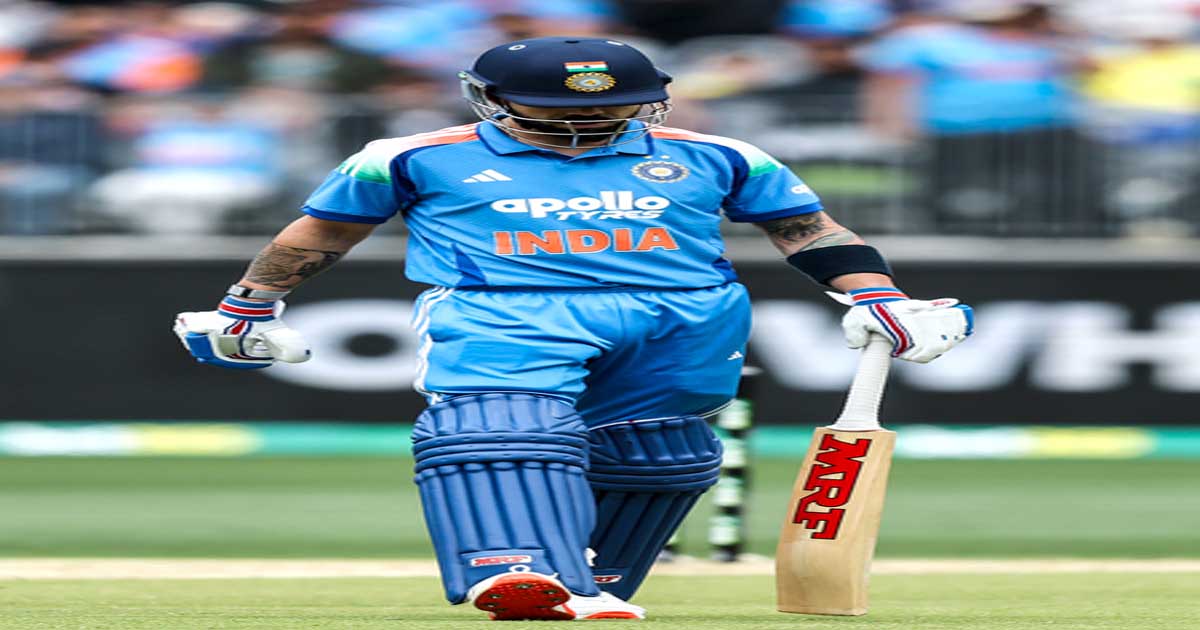National News
Mumbai court grants mutual consent divorce to Yuzvendra Chahal, Dhanashree Verma

Mumbai, March 20: A family court in Mumbai’s Bandra on Thursday allowed a mutual consent divorce plea filed by cricketer Yuzvendra Chahal and choreographer Dhanashree Verma.
Dhanashree and Chahal got engaged in 2020 and married in December of the same year in a private ceremony in Gurugram. “Divorce has been granted. The marriage has been dissolved. They are no longer husband and wife. The petition for divorce by mutual consent has been accepted,” Yuzvendra Chahal’s lawyer told media.
A day before, the Bombay High Court allowed an application filed by the estranged couple seeking waiver of the cooling-off period in their ongoing mutual consent divorce proceedings.
A bench of Justice Madhav Jamdar of the Bombay HC directed the family court to decide the divorce petition on Thursday itself considering Chahal’s participation in the upcoming Indian Premier League (IPL).
The leg-spinner was picked by Punjab Kings (PBKS) for Rs 18 crore in the IPL 2025 auction.
The Justice Jamdar-led Bench took note of the fact that the parties had been living apart for over two and a half years and had duly complied with the consent terms regarding the payment of alimony arrived at during the mediation process.
Under Hindu law, if the husband and wife have been living separately for one year or more, they may apply to obtain a decree of divorce by mutual consent. However, under Section 13B(2) of the Hindu Marriage Act, a statutory cooling-off period of at least six months from the date of presentation of the divorce petition is provided, to explore possibilities of settlement and reunion between the couple.
The Supreme Court, in a landmark verdict in 2017, held that the 6-month cooling-off period is not mandatory, and the court may waive the condition if it is satisfied that there exists no possibility of parties resuming cohabitation.
The 28-year-old dancer, Dhanashree is known for her fusion dance performances that blend traditional Indian dance forms with contemporary styles.
Recently, Chahal was spotted amongst the spectators sitting next to social media star RJ Mahvash during the Champions Trophy Final. However, this was not the first time the two have been linked together.
Last year, in December, a picture of RJ Mahvash with the cricketer from a Christmas celebration went viral. The social media star then took to Instagram to set the record straight.
In a note, she wrote: “Some articles and speculations have been circulating around the Internet. It’s literally funny to see how baseless these rumours are. If you get seen with a person of the opposite gender, does that mean you are dating them? I’m sorry, what year is this? And how many people are you all dating then?” “I have been patient for 2-3 days now, but I won’t let any PR teams drag my name into this to cover up other people’s images. Let people live in peace with their friends and family during tough times.”
Chahal’s IPL journey, spanning over 160 matches, has been nothing short of remarkable. With 205 wickets to his name, he is the leading wicket-taker in IPL history, having surpassed Dwayne Bravo’s record of 183 wickets during the 2023 season. His career average of 22.44 and an economy rate of 7.8 underline his ability to combine wicket-taking prowess with miserly spells, a rare feat in the T20 format.
Chahal’s crowning moment came in 2022 when he donned the Purple Cap for Rajasthan Royals (RR), scalping a phenomenal 27 wickets in the season.
During the 2024 edition, Chahal became the first bowler in IPL history to breach the 200-wicket milestone. His IPL tally includes six four-wicket hauls, one five-wicket haul, and a hat-trick. Between 2014 and 2021, Chahal was Royal Challengers Bangalore’s go-to spinner. In 113 matches for the franchise, he scalped 139 wickets, a record that still stands as the highest for any bowler in its colours.
Despite his dominance, RCB made the surprising decision not to retain him ahead of the 2022 mega auction.
Chahal’s resurgence post-RCB was nothing short of spectacular. Representing RR in the last three seasons, he claimed 66 wickets, underlining his consistent impact.
Business
Apple ships record 4.9 million iPhones to India in Q3 2025

New Delhi, Oct 23: Riding high on the success of its new iPhone 17 series and festive season demand, Apple Inc recorded its highest-ever quarterly shipments to India, sending 4.9 million smartphones to the country during the July–September quarter of 2025 (Q3 CY25), according to industry estimates.
According to research firm Omdia, this marks a 47 per cent year-on-year (YoY) growth and represents Apple’s strongest performance in the Indian market to date.
What’s more, India accounted for 9 per cent of Apple’s total global iPhone shipments in the quarter — the highest share ever for the country — underscoring India’s growing importance in the company’s global strategy.
The launch of the iPhone 17 series on September 9 played a key role in driving record sales.
The new lineup features major camera upgrades, including a 48MP Fusion Main camera and a 48MP Fusion Ultra-Wide lens, alongside a 6.3-inch Super Retina XDR display with ProMotion.
The device also comes with the new A19 chip for enhanced performance and Ceramic Shield 2 technology, offering three times better scratch resistance and reduced glare.
Apple is expected to post its highest-ever festive quarter in India this year, with analysts forecasting a 28 per cent increase in sales compared to last year, driven by the early popularity of the iPhone 17 series.
This milestone comes on the heels of another major achievement for the Cupertino-based company — record iPhone exports from India.
In the April–September period of the current financial year, Apple shipped iPhones worth about $10 billion (over Rs 88,500 crore), marking a 75 per cent growth compared to the same period last year, according to industry estimates.
The success reflects the strong push of the government’s ‘Make in India’ and production-linked incentive (PLI) schemes, which have encouraged Apple to expand its manufacturing base in Tamil Nadu and Karnataka.
A majority of the iPhones produced in India this year — nearly 78 per cent — were exported to the US, up from 53 per cent a year earlier.
National News
IND v AUS: Virat Kohli registers successive ducks in ODIs for the first time

Adelaide, Oct 23: Batting stalwart Virat Kohli’s much-anticipated appearance at his favourite hunting around, the Adelaide Oval, ended in a disappointment on Thursday as the former India captain was dismissed for a four-ball duck in the ongoing second ODI against Australia.
After bagging a duck in the rain-hit first ODI in Perth, Kohli’s return to playing at the Adelaide Oval, where he has scored five international centuries – the most for any ground in his career – was expected to get him some runs under his belt, especially with a huge crowd of Indian fans present at the venue.
But all of that anticipation ended in the seventh over when an impressive Xavier Bartlett hit Kohli flush on the pad with a brilliant inswinger to trap him lbw. After failing to be in the line of the ball, Kohli opted to not go for the review after a brief chat with non-striker Rohit Sharma.
It was an incredible set up from Bartlett, who bowled three deliveries away outside off before getting one to nip back in and dismiss Kohli. It also marked the first time of Kohli being dismissed for consecutive ducks in ODIs.
As he walked off, the Adelaide crowd rose in a standing ovation, acknowledging the batter who has scored 976 runs at the venue – the most by any visiting player. In appreciation of the crowd giving him a standing ovation, Kohli made a gentle raise of his right hand as he walked towards the dressing room.
If this was indeed Kohli’s final outing at the iconic ground, it ended not with a flourish but with a poignant wave to fans who have witnessed some of his finest innings here.
Kohli will now have the third ODI in Sydney, set to happen on Saturday, to have some runs and sign off from the Australia tour on a high.
Crime
Blast on railway track in Assam’s Kokrajhar, train services disrupted

Guwahati, Oct 23: Train services were thrown out of gear after a powerful explosion ripped through a section of railway track between Kokrajhar and Salakati stations in Assam’s Kokrajhar district, officials said on Thursday.
The incident happened in the early hours of Thursday, according to officials.
As per the preliminary information, an improvised explosive device (IED) detonated around five kilometres east of Kokrajhar railway station, causing extensive damage to the track and forcing the suspension of train movement on both up and down lines.
Railway authorities immediately halted traffic as a precautionary measure, stranding several trains at nearby stations and leaving hundreds of passengers stuck for hours.
Panic and confusion gripped travellers as news of the explosion spread, while emergency announcements advised passengers to remain calm and await further instructions.
Teams from the railway department, security agencies, and bomb disposal units rushed to the spot shortly after the blast. The site was cordoned off as experts examined the cratered track and collected forensic evidence.
Senior police and railway officials also reached the area to supervise repair work and oversee the investigation.
While no casualties have been reported so far, the impact of the explosion severely disrupted train schedules along the busy route.
Authorities have not yet identified those responsible for the incident.
Security has been intensified across Kokrajhar and adjoining districts, with patrols stepped up on key railway stretches as investigators work to trace the perpetrators and determine the motive behind the blast.
A senior police official said, “There was a blast on the railway tracks, which caused disruption in the train services. At least one metre of track suffered damage due to the blast. The track has been repaired and train services have resumed on the route. We have launched a probe to find the details behind this incident. At this point, we can not conclude anything about the blast, whether it was an IED or not. Once we complete the investigation, we will be able to provide further information.”
-

 Crime3 years ago
Crime3 years agoClass 10 student jumps to death in Jaipur
-

 Maharashtra1 year ago
Maharashtra1 year agoMumbai Local Train Update: Central Railway’s New Timetable Comes Into Effect; Check Full List Of Revised Timings & Stations
-

 Maharashtra1 year ago
Maharashtra1 year agoMumbai To Go Toll-Free Tonight! Maharashtra Govt Announces Complete Toll Waiver For Light Motor Vehicles At All 5 Entry Points Of City
-

 Maharashtra1 year ago
Maharashtra1 year agoFalse photo of Imtiaz Jaleel’s rally, exposing the fooling conspiracy
-

 National News1 year ago
National News1 year agoMinistry of Railways rolls out Special Drive 4.0 with focus on digitisation, cleanliness, inclusiveness and grievance redressal
-

 Maharashtra11 months ago
Maharashtra11 months agoMaharashtra Elections 2024: Mumbai Metro & BEST Services Extended Till Midnight On Voting Day
-

 National News1 year ago
National News1 year agoJ&K: 4 Jawans Killed, 28 Injured After Bus Carrying BSF Personnel For Poll Duty Falls Into Gorge In Budgam; Terrifying Visuals Surface
-

 Crime1 year ago
Crime1 year agoBaba Siddique Murder: Mumbai Police Unable To Get Lawrence Bishnoi Custody Due To Home Ministry Order, Says Report












